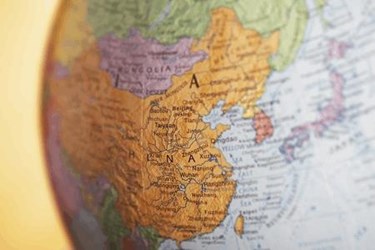What China's New Two-Invoices Policy Means For Pharmaceutical Manufacturers
By Yazan Saleh, Decision Resources Group

Traditionally, China’s drug distribution system has involved a very complex network of more than 13,000 distributors dispersed across the country. A pharmaceutical manufacturer usually sells drugs to a distributor (referred to as a first-tier distributor), which would in turn sell the product to multiple other distributors (referred to as second- or higher-tier distributors) before the drug reaches its final point of use (hospital, pharmacy, clinic). Regulators in China have long been concerned that this multitiered network inflates drug prices due to multiple distributor markups and facilitates “unchecked” transactions that could transfer kickbacks to physicians.
A 2017 pilot program, known as the “two-invoices” system, aims to address these issues by changing the way manufacturers, distributors, and healthcare facilities operate in the procurement process. Under the two-invoices system, a maximum of two invoices can be issued across the supply chain: one being the manufacturer’s invoice to a distributor and the second being the distributor’s invoice to the end user (e.g., the health facility).
Details And Timeline
At the beginning of 2017, the State Council of China issued a circular titled Opinion on the Implementation of the Two Invoices System in Procurement of Pharmaceuticals by Public Medical Institutions. As described above, the two-invoices system will require that only one distributor be involved as a middle party between the manufacturer and the end customer (e.g., hospital). As part of the new policy, both invoices produced along this three-part supply chain must be made available to the public hospital that is making the purchase. In addition, manufacturers will no longer be able to delegate bidding to distributors, as they must directly participate in the tendering process for public hospitals. Noncompliance with any of the regulations set out in this policy will result in disqualification of the offending party (manufacturer or distributor) from bidding on future contracts — and possible blacklisting from the entire procurement process.
In terms of scope, the two-invoices system allows some flexibility for life sciences companies with regard to the definition of “pharmaceutical manufacturer.” In addition to the producing company, commercial enterprises owned by the manufacturer and authorized general agents will be considered “manufacturers” for the purposes of the two-invoices system. “Pharmaceutical trading groups” will also be allowed to transfer pharmaceutical products from a parent to one of their subsidiaries without necessitating an “invoice.” Another flexibility grants some exceptions in terms of the number of invoices allowed when supplying drugs to hospitals located in remote rural areas. Nevertheless, the policy document as yet does not fully define what would be considered a remote area.
The pilot program started in the province of Fujian in 2016 but has since been expanded to 11 more provinces (Anhui, Chongqing, Gansu, Hunan, Jiangsu, Liaoning, Qinghai, Shaanxi, Shanxi, Sichuan, and Zhejiang). Although a specific time frame has not been set, nationwide implementation is expected sometime in 2018. While the system will be gradually adopted by public hospitals over the next couple of years, the document encourages all hospitals and health facilities in China to implement it.
Price Transparency
The disparity between the ex-manufacturer price and the price that the hospital pays was relatively large prior to the two-invoices system due to multiple distributor markups. Under the new two-invoices system, public hospitals will have visibility of the ex-factory price that the manufacturer has offered to the supplier. This knowledge will put public hospitals in a better negotiating position to seek lower prices during the bidding process. In other words, distributors will likely no longer be able to enjoy the same margins that were being added to the price prior to the two-invoices system. This reduction in margins could impact a distributor’s ability to cover the cost of any marketing and sales activities. As a result, distributors may in turn seek to secure reduced prices from the manufacturer. Overall, the two-invoices system has the potential to put downward pressure on the price of pharmaceutical products in China.
Regulatory Transparency
The multiple layers of distribution under the traditional supply system often created opacity covering up dishonest business practices by some players in the industry. Such practices involved transferring payments/kickbacks to healthcare professionals to influence their prescribing habits. The Chinese government hopes that the elimination of multitier distribution through the two-invoices system will help address this issue. Inflated and fake invoices, which are some of the ways kickbacks are transferred to physicians, are more likely to be identified by authorities in the new simpler supply chain. Achieving this objective will also be helped using electronic invoices, as is encouraged in the released circular.
Implications And Recommendations
Distributor Arrangements
The shift to a flat distribution model as implicated by the two-invoices policy will likely cause pharmaceutical manufacturers to engage with new distribution clients, particularly for reaching smaller provinces and remote areas. Second- or third-tier distributors that have traditionally been used as a link to such remote areas would now need to be contacted and dealt with directly by the manufacturer. Therefore, manufacturers should prepare their internal teams and operations to handle and manage an increased number of distributors.
Another challenge for manufacturers is to ensure that those previous auxiliary distributors are compliant with all Chinese regulations prior to restructuring agreements with them as primary distributors. Some of these distributors may not have sufficient financial resources to dedicate to complying with regulations. As a result, the manufacturer’s due diligence in reviewing the business practices of these new distributors before contracting with them directly will be crucial to success. Dealing with noncompliant distributors could result in loss of privilege to bid on public hospital tenders and thus impede access to the market.
During the initial periods of implementation of the two-invoices policy, manufacturers should also expect to deal with high demand for first-tier distributors that have vast geographic coverage. Therefore, preemptive measures to arrange agreements with new distributors could prove to be helpful in the long run.
Market Acquisitions
The restrictions under the two-invoices system will undoubtedly reduce the total number of distributors in the Chinese market. Small distributors that are not able to adapt by increasing regulatory compliance will likely become irrelevant players and be forced out of business. Distributors that offer some specialized access to remote areas could be acquired by larger distributors that will be seeking to expand their geographic coverage. As a result, manufacturers should keep abreast of a likely very active round of mergers and acquisitions in the distributor segment as the market reacts to the new regulations. Such trends have already been observed in the province of Fujian, where the number of distributors in the province has almost halved since the launch of the pilot program in 2016.
Pricing Strategies
As discussed above, the ex-factory price set by the manufacturer will now be visible to hospitals procuring the pharmaceutical product. This increased transparency will require manufacturers to adjust their pricing strategy. Manufacturers choosing to increase the ex-factory price to match the price to be paid by hospitals (excluding the single distributor fee) will enjoy higher revenues but at some costs. Chinese authorities/public hospitals may question the sudden increase in ex-factory price, considering that prior to the two-invoices system, distributor markups, which are now mostly eliminated, were a significant driver of the price that the hospital paid. Additionally, a higher ex-factory price would mean the manufacturer would be responsible for additional value-added tax (VAT) payable to Chinese tax authorities.
Most importantly, higher ex-factory prices decrease the margins that the distributor can earn on selling the product to the hospital. A reduction in this margin will weaken the distributor’s ability to finance any promotional and marketing services for these products, which can in turn result in reduction of overall sales of the pharmaceutical product. As a result, manufacturers would need to strengthen their own internal marketing functions to replace any sales support services that have traditionally been provided by the distributors. Another possibility would be for manufacturers to outsource some of the marketing and sales services to contract sales organizations (CSOs). The services of CSOs are expected to be in high demand after rollout of the two-invoices system, as many manufacturers could seek to follow this approach.
Manufacturers choosing not to increase their ex-factory price will face different, but critical, challenges. While such an approach could potentially allow distributors to retain some of the margins that would go toward funding marketing services, it remains unclear how hospitals would react. The visibility of the ex-factory price to the hospital may prompt them to demand lower prices, thus still putting a limit on the amount of distributor markups.
Conclusion
To remain competitive, distributors and manufactures must adapt to the two-invoices system by adjusting their operations and business strategies. Intermediary distributors must realign their business models to emerge as first-tier distributors that act as a direct link between manufacturers and hospitals rather than as middlemen among other distributors. As a result of these pressures, many of the smaller distributors will either be acquired by larger ones or be forced out of business. Pharmaceutical manufacturers should therefore be ready for some turbulence in the supply chain as they shuffle their distributor arrangements to comply with the new regulations. In addition, both manufacturers and distributors will need to exercise due diligence to ensure appropriate use of sponsorships, donations, and incentive programs, as the two-invoices system is designed to identify and punish controversial transactions. Keeping abreast of any updates to the two-invoices system is imperative as further policy releases can help eliminate some of the ambiguities and uncertainties present in the current guidelines.
About the Author:
 Yazan Saleh is an associate analyst on the Global Market Access Insights team at Decision Resources Group (DRG). He is responsible for monitoring the evolving healthcare and pharmaceutical landscapes with a focus on Canada, China, Japan, Saudi Arabia, and South Africa. He is primarily involved in analyzing and reporting on the impending regulatory and market changes that impact access to these regions through DRG’s Global Market Access Solution (GMAS) platform. Yazan holds a B.Sc. from the University of Toronto.
Yazan Saleh is an associate analyst on the Global Market Access Insights team at Decision Resources Group (DRG). He is responsible for monitoring the evolving healthcare and pharmaceutical landscapes with a focus on Canada, China, Japan, Saudi Arabia, and South Africa. He is primarily involved in analyzing and reporting on the impending regulatory and market changes that impact access to these regions through DRG’s Global Market Access Solution (GMAS) platform. Yazan holds a B.Sc. from the University of Toronto.
